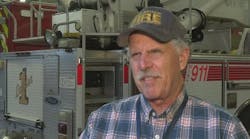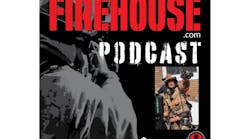It is time to take a look at the basics of organizational life. Far too many people fail to understand that the fire department is an organization, plain and simple. While it is special to us, the basics are the same for us as they are for every other type of organization there is.
Just what is an Organization? I have developed a definition based upon many years of research and training. Based upon my research in this arena during my time at Manhattan College many years ago, I offer to you that, “ … an organization is the pattern of ways in which people, too numerous to have face-to-face contact at all times and engaged in a wide range of tasks, relate to one another in a conscious systematic manner; for the accomplishment of mutually acceptable goals.” 1
Simply stated, an organization is a bunch of guys and gals, much like you, working together to reach the same goals. We will have to presume that you are all fire or EMS people in your department. Because of this, you all should be working together on fire-related or EMS matters.
Some examples of organizations that you might be familiar with are:
- Veteran's organizations
- Fraternal organizations like the Masons, Elks, etc.
- Political parties
- Automobile manufacturing corporations
These all involve people who are all working together to reach the same goals.
Over the course of history we seem to have moved from the age of the individual craftsman to the concept of the productive work group. This came as a consequence of the Industrial Revolution. In our case, it was discovered early on that the job of fire suppression was one that could not be performed safely and efficiently by individuals. We also know that EMS functions cannot be delivered by a single person.
It takes engine people, aerial ladder people, rescue people as well as officers, ambulance units, first aid squads, life squads and law enforcement personnel to handle even the simplest fireground situation. This is your community emergency operations organization. To succeed, you must all work toward common goals. Without a team effort, success on the fireground would only be a matter of luck; as well as costly trial and error.
I would offer to you that there are three elements common to every organization, regardless of type or kind. They are:
- Structure
- Process
- Behavior
Every organization must have an identifiable structure within which its members can function in a productive manner. We have defined structure as the relatively fixed relationships resulting from the determination of the following.
- Job Definitions - The breakdown of work into its many parts and the definition of each part of the whole organization
- Departmentalization - The grouping of like tasks and functions.
- Span of Control - How many people report to a given supervisor?
- Delegation - Moving authority as close to the source of the decision as possible.
A fire department is considered to be a Scalar Organization, in that orders are issued at the top and travel down through an established chain of command. Many times problems come from people thinking that they do not have to use the chain of command.
Another concept that helps any type of organization succeed is called Unity of Command This concept tells us that each individual should only have to report to and receive orders from a single individual. Think of the confusion that can occur when the same person receives conflicting orders from three or four people. We need to know to whom we must report. We need to inform other people who may seek to give us orders of this critical fact.
The organizational environment wherein you work can help or hinder your ability to do your job and achieve the organization’s goals. In those cases where people feel unappreciated, confined, and abused; they cannot work to their fullest potential. In organizations where all power comes from a single source, people will feel stifled. When organizations work to empower people, by pushing decision down to the lowest level possible, people will work harder and accomplish more.
References:
1Gibson, Ivancivich, and Donnelly (2002) Organizations: Behavior, Structure, and Processes. 11th ed. McGraw Hill.
HARRY R. CARTER, Ph.D., CFO, MIFireE, a Firehouse.com Contributing Editor, is a municipal fire protection consultant based in Adelphia, NJ. Dr. Carter retired from the Newark, NJ, Fire Department and is a past chief and active life member of the Adelphia Fire Company. Follow Harry on his "A View From my Front Porch" blog. You can reach Harry by e-mail at [email protected].







